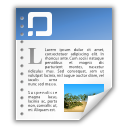| dc.contributor.author | Romero, Danielle | |
| dc.date.accessioned | 2011-10-13T21:52:00Z | |
| dc.date.available | 2011-10-13T21:52:00Z | |
| dc.date.issued | 2011-06-15 | |
| dc.identifier.uri | http://hdl.handle.net/1803/4938 | |
| dc.description | Teaching and Learning Department Capstone Project. | en_US |
| dc.description.abstract | Multicultural mathematics acts as a link between the contributive notions of ethnomathematics and the practices of culturally relevant pedagogy. It challenges the common disconnect between mathematical concepts and the influence of “cultural norms and values” (Wiest, 2002). Multicultural mathematics asks learners to question why a group of people might have come up with a specific process or solution, pushing learners to embark on a similar journey towards meaningful mathematics. In many classrooms, students are not asked to make sense of mathematical processes, but only to “assimilate prescribed procedures by rote” (D'Ambrosio, 2001, p. 309). Because multicultural mathematics recognizes that “mathematics was created to be useful for particular situations” (Wiest, 2002), it naturally supports children as they “invent personally meaningful conceptualizations” and gain deeper and more conceptually significant understandings (D'Ambrosio, 2001). Through this process they recognize that mathematics is not cut and dry, but instead can be “differentially applied across various contexts” (Wiest, 2002). This paper uses the context of Native Yup’ik understandings to approach the concept of “measurement” from a multicultural perspective. To demonstrate how to teach measurement from this diverse understanding, I consider and discuss a case study by Lipka, Hogan, Webster, Yanez, & Adams (2005) which explores the way Yup’ik multicultural mathematics can serve as the underpinning for a challenging elementary mathematics curriculum. When multicultural mathematics draws from ethnomathematic principles, it goes beyond “cosmetic changes” (Sleeter, 1997, p. 685) and instead becomes a powerful tool for examining “how mathematical reasoning is used in different cultures” (Sleeter, 1997, p. 685), placing tasks in a meaningful context. | en_US |
| dc.language.iso | en_US | en_US |
| dc.publisher | Vanderbilt University. Peabody College | en_US |
| dc.subject | multicultural mathematics | en_US |
| dc.subject | ethnomathematics | en_US |
| dc.subject | ways of knowing | en_US |
| dc.subject | measurement | en_US |
| dc.subject | elementary | en_US |
| dc.subject | native | en_US |
| dc.subject.lcsh | Mathematics -- Study and teaching | en_US |
| dc.subject.lcsh | Multicultural education -- Study and teaching | en_US |
| dc.subject.lcsh | Minorities -- Education -- United States -- Mathematics | en_US |
| dc.subject.lcsh | Ethnomathematics | en_US |
| dc.title | Multicultural Mathematics:What is the Importance of Incorporating Diverse Understandings in the Contemporary Elementary Classroom?: A Practical Application of Measurement through the Cultural Context of the Native Yup’ik People | en_US |
| dc.type | Capstone | en_US |
| dc.description.college | Peabody College of Education and Human Development | en_US |
| dc.description.department | Department of Teaching and Learning | en_US |

